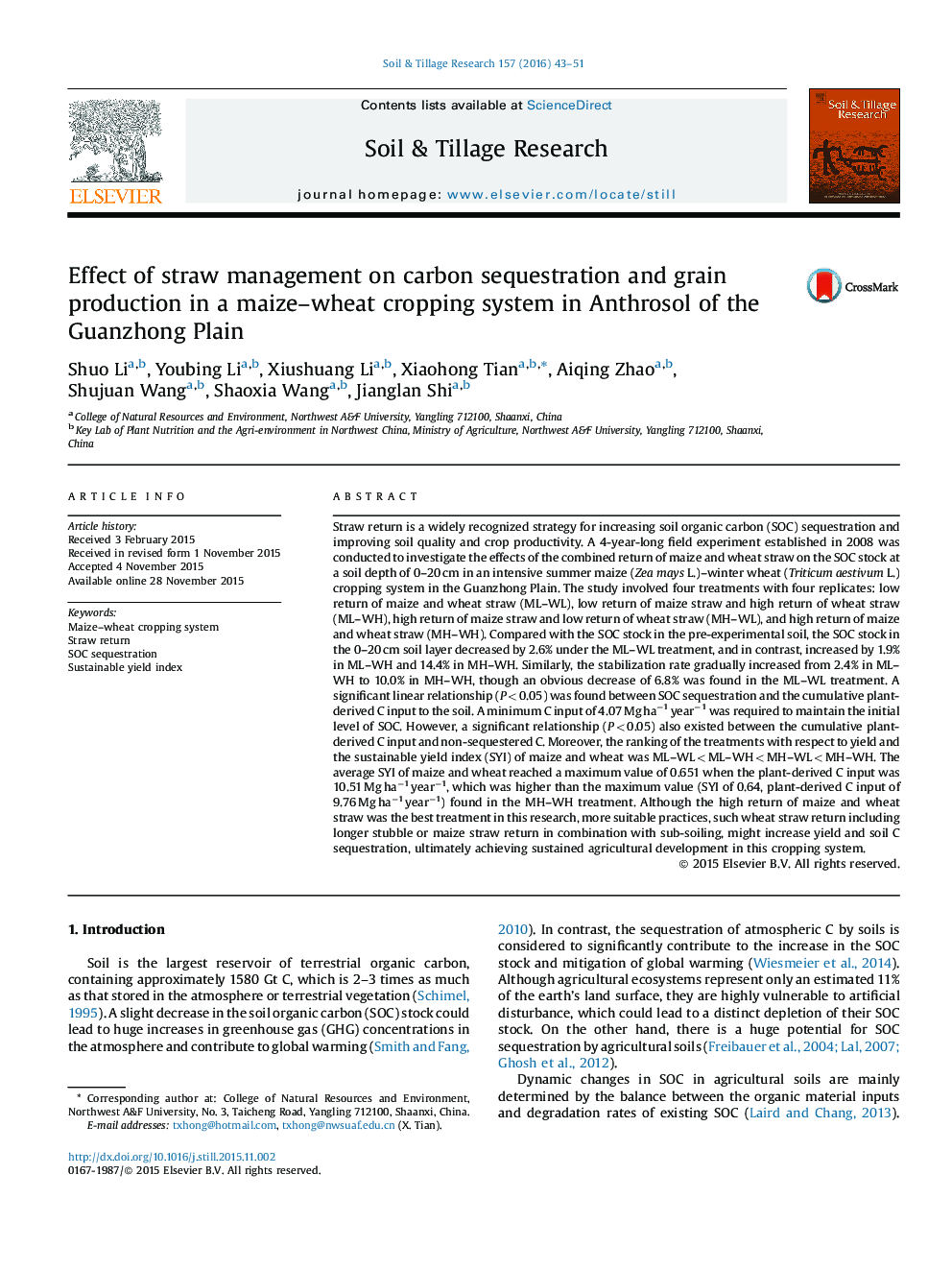| کد مقاله | کد نشریه | سال انتشار | مقاله انگلیسی | نسخه تمام متن |
|---|---|---|---|---|
| 305553 | 513034 | 2016 | 9 صفحه PDF | دانلود رایگان |

• Straw return was effective in increasing carbon sequestration and grain production.
• Straw return was effective in increasing grain yield and SYI value.
• A minimum C input of 4.07 Mg ha−1 year−1 was required to maintain SOC level.
• The optimal SYI value could reach 0.651 when C input reaches 10.51 Mg ha−1 year−1.
• The MH–WH treatment is a sustainable practice for sustainable crop production.
Straw return is a widely recognized strategy for increasing soil organic carbon (SOC) sequestration and improving soil quality and crop productivity. A 4-year-long field experiment established in 2008 was conducted to investigate the effects of the combined return of maize and wheat straw on the SOC stock at a soil depth of 0–20 cm in an intensive summer maize (Zea mays L.)–winter wheat (Triticum aestivum L.) cropping system in the Guanzhong Plain. The study involved four treatments with four replicates: low return of maize and wheat straw (ML–WL), low return of maize straw and high return of wheat straw (ML–WH), high return of maize straw and low return of wheat straw (MH–WL), and high return of maize and wheat straw (MH–WH). Compared with the SOC stock in the pre-experimental soil, the SOC stock in the 0–20 cm soil layer decreased by 2.6% under the ML–WL treatment, and in contrast, increased by 1.9% in ML–WH and 14.4% in MH–WH. Similarly, the stabilization rate gradually increased from 2.4% in ML–WH to 10.0% in MH–WH, though an obvious decrease of 6.8% was found in the ML–WL treatment. A significant linear relationship (P < 0.05) was found between SOC sequestration and the cumulative plant-derived C input to the soil. A minimum C input of 4.07 Mg ha−1 year−1 was required to maintain the initial level of SOC. However, a significant relationship (P < 0.05) also existed between the cumulative plant-derived C input and non-sequestered C. Moreover, the ranking of the treatments with respect to yield and the sustainable yield index (SYI) of maize and wheat was ML–WL < ML–WH < MH–WL < MH–WH. The average SYI of maize and wheat reached a maximum value of 0.651 when the plant-derived C input was 10.51 Mg ha−1 year−1, which was higher than the maximum value (SYI of 0.64, plant-derived C input of 9.76 Mg ha−1 year−1) found in the MH–WH treatment. Although the high return of maize and wheat straw was the best treatment in this research, more suitable practices, such wheat straw return including longer stubble or maize straw return in combination with sub-soiling, might increase yield and soil C sequestration, ultimately achieving sustained agricultural development in this cropping system.
Journal: Soil and Tillage Research - Volume 157, April 2016, Pages 43–51